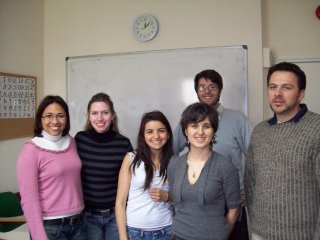After a quite interesting month, in which I attended two very interesting lectures (Carlos Guerreiro and Richard Stallman lectures) and a very good fortnight in London I wasn’t sure what to talk about in this post. However, I liked so much an example that Richard Stallman told us talking about software patents that I needed to say some words.
I’ve been always against software patents, Igalia as company was in some campaings against them. But last week, I listened a very good example to clearly explain the reason in better way.
First, some context, software is an engineering area very different to other ones. For example, architecture or pharmacy need to deploy ideas in some physical medium, hence you have a real limit and you are not able to propose any combination of ideas for some specific purpose. However, in software, you can mix thousands of different ideas to develop a product. Maybe patents, in other areas, were created to avoid people dying with their secret.But software is different, and I think Richard Stallman is right trying to compare it with music.
Music is an abstract art where you can combine any idea to create a new one and music genius would never died with their secret. Do you imagine that in the first years of music height “music patents” existed? I do not think that would be fair for us that the first person who had the idea of mix some arpeggios could avoid other people from combining them, that is, without paying a good amount of money. Probably, we would not have Mozart or Beethoven works to enjoy because it would be impossible to reuse some previous ideas during their composition.
For me, software is similar, there are some obvious abstract ideas that should not be patented. Sooner or later people would need them to build better ideas, in the way musicians combine them. If software patents are approved, only big companies will be able to develop software programs. In Spain most of companies are “pymes”. They would be the only ones to fight against lawsuits because they have a lot of other patents to get a good agreement (if you do not hurt me I do not hurt you).
I think European government should be aware of this wolf in sheep’s clothing that patents may be for medium and little companies and they should avoid software patents to be approved.




